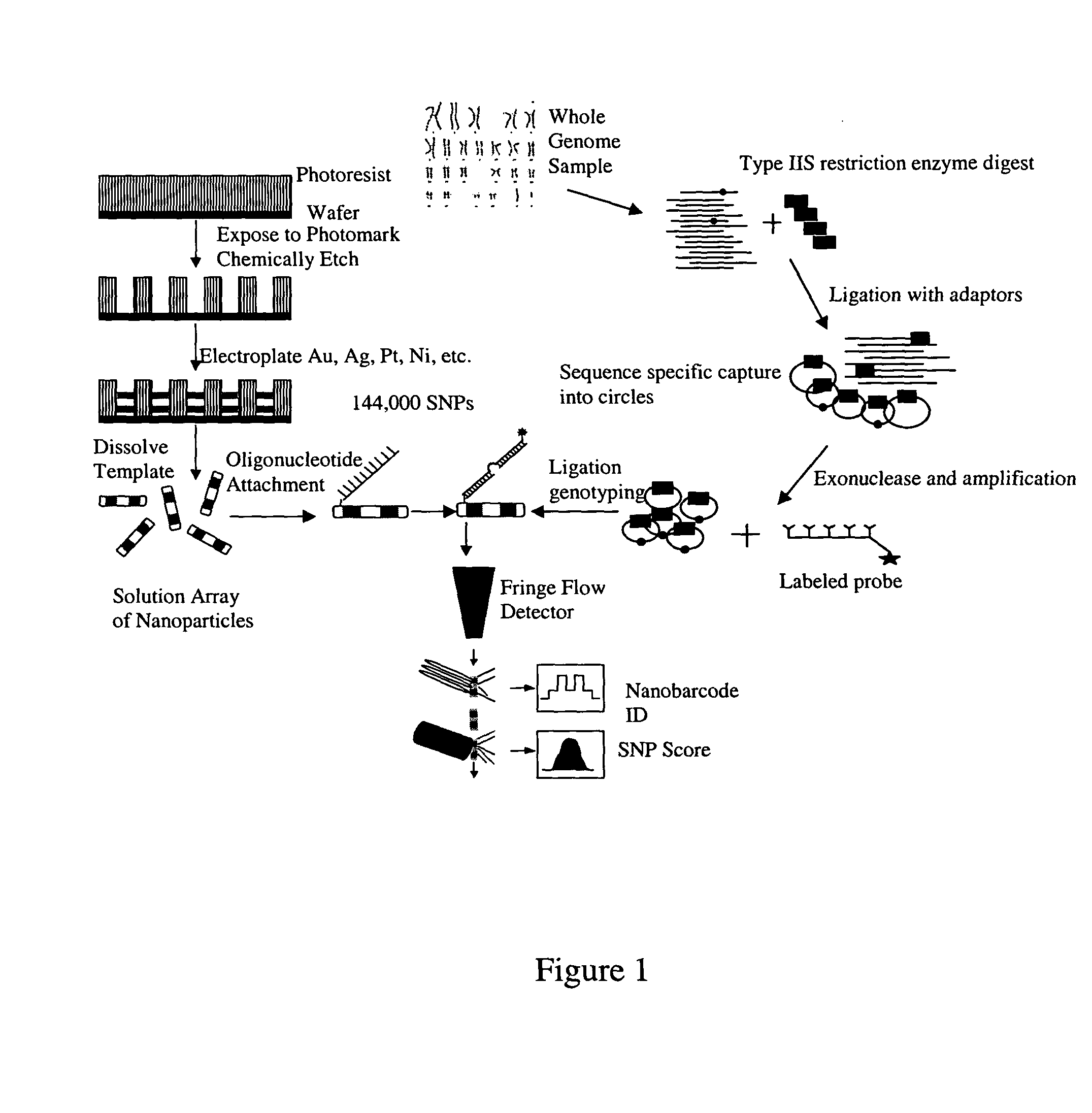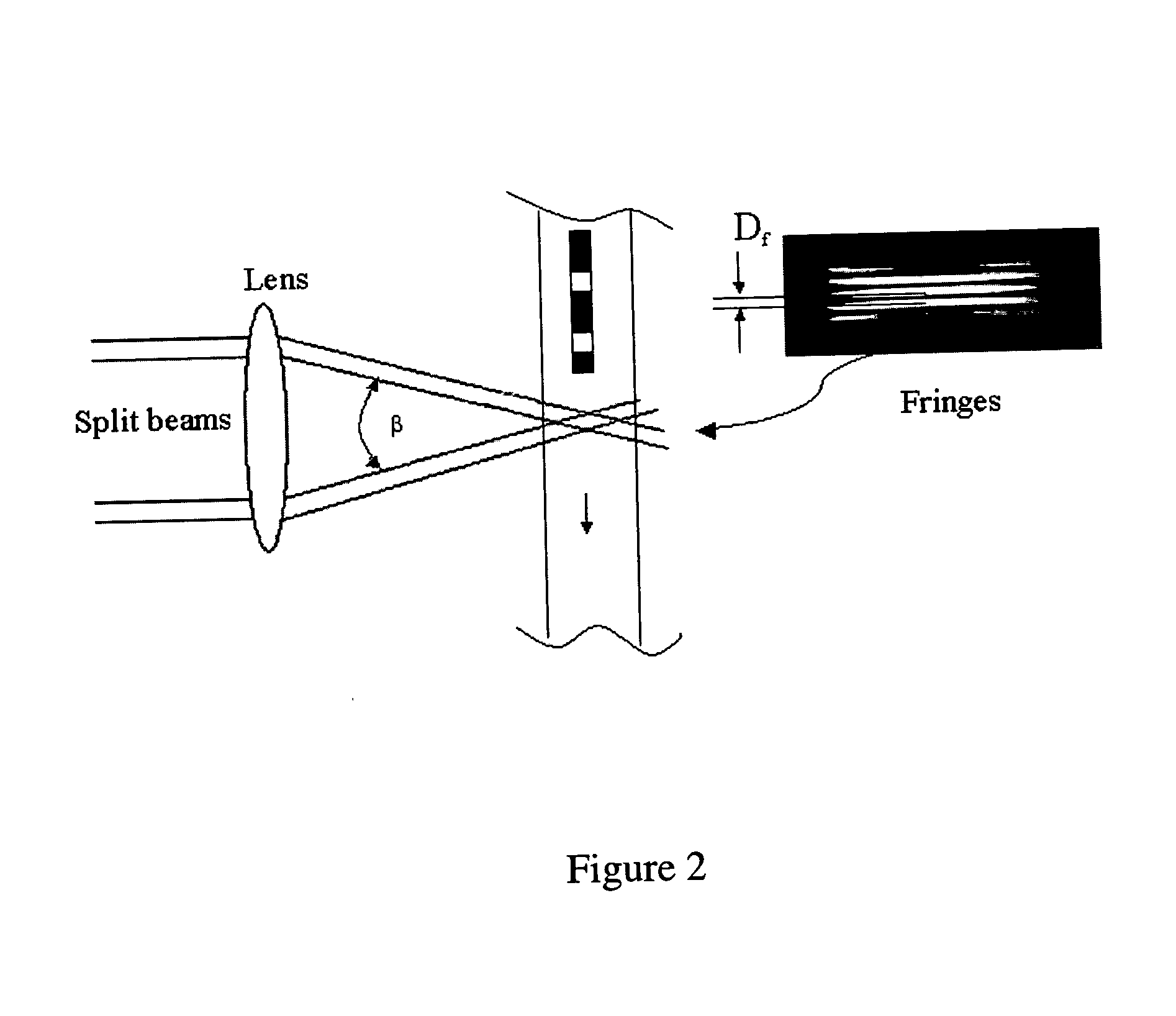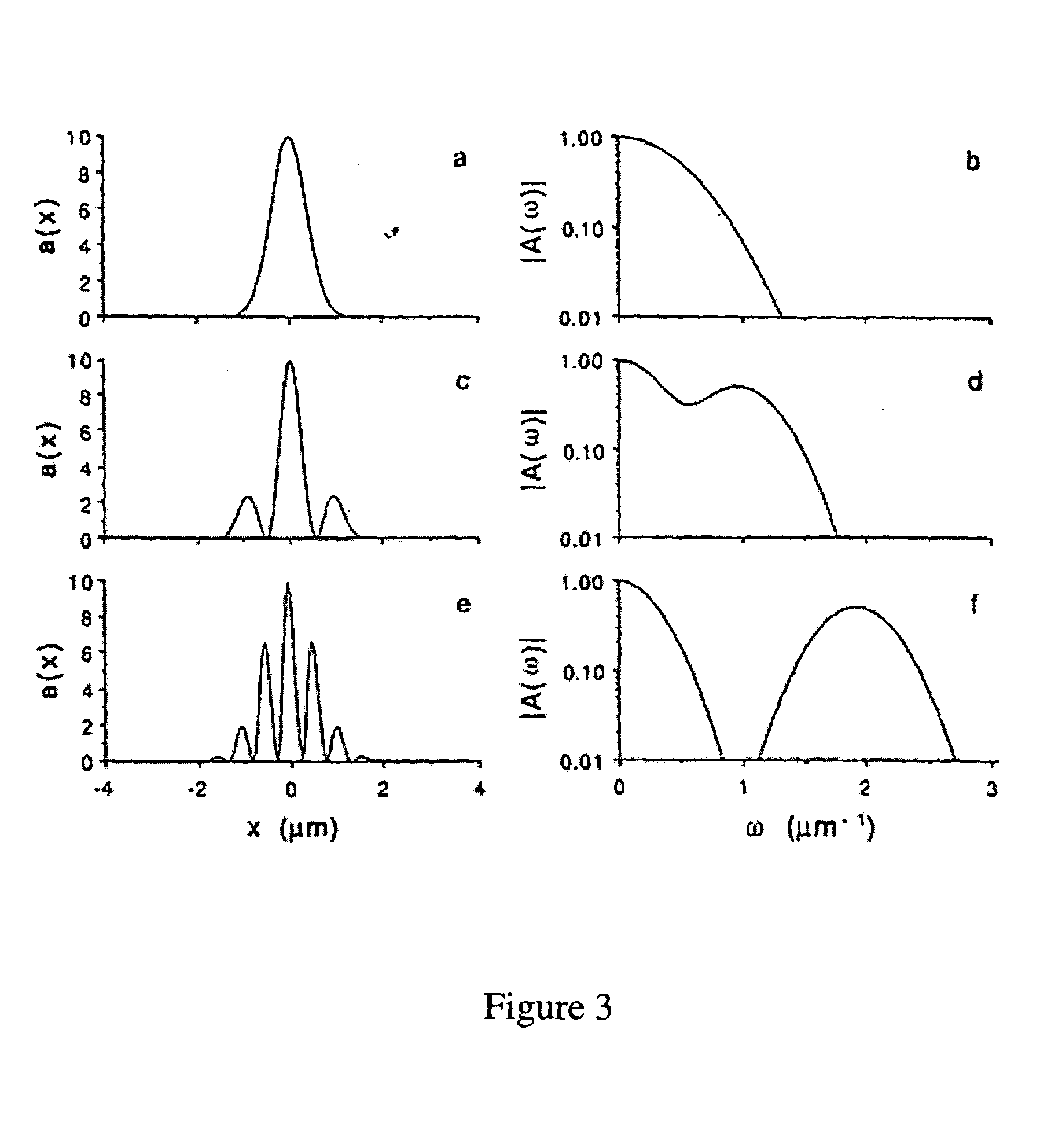Universal selective genome amplification and universal genotyping system
a genome amplification and genotyping technology, applied in the field of small fragments of genomic dna isolation and amplification, can solve the problems of cost and time consumption, need to perform many pcr reactions for each array, etc., and achieve the effect of enriching the snps
- Summary
- Abstract
- Description
- Claims
- Application Information
AI Technical Summary
Benefits of technology
Problems solved by technology
Method used
Image
Examples
example 1
Isolation of Fragments from E. coli
[0142] The isolation of specific fragments from a complex mixture of fragments was tested on the 4.5 Mb E. coli genome which, when digested with Bbv I, produces an estimated 18,000 fragments with variable 4-base, 5-prime overhangs. Three fragments were selected of 100, 150, and 200 bp in size from three random regions of the published E. coli MG1655 genome and adapters were designed and prepared for ligation with the digested genomic DNA (see Table 4).
TABLE 4Primer NamePrimer Sequence100 LeftGGTCGCTGCCATCCCCAA100 RightTCAAGTCCCCATCCGCTGTCT150 LeftGTTGGCTGCCATCCCCAA150 RightTTTTGTCCCCATCCGCTGTCT200 LeftTGTAGCTGCCATCCCCAA200 RightCACCGTCCCCATCCGCTGTCT
[0143] Adapters were prepared by annealing two complementary oligonucleotides that, when double stranded, produced 14- and 17-base, 3-prime overhangs. Two shorter, variable oligonucleotides were then ligated to the phosphorylated core with T4 DNA ligase to produce the 4-base, 5-prime overhangs. The co...
example 2
Dry Etch Step (RIE) Process
[0149] 5 nm of chromium is sputtered on a silicon wafer, followed by 20 nm of gold. The gold is the electrode for plating. Next, the wafer is spin coated with 10 to 20 μm polymethylmethacrylate (PMMA), the thickness of which depends on the required nanobar length. Next, approximately 500 nm SiO2 etch stop is deposited followed by spin coating 2 microns of photoresist. The upper layer of resist is exposed with a hole-array pattern and developed. The pattern is transferred to the etch mask with a dry etch step (dry reactive ion etching or RIE). RIE etching is again used to pattern the polymer. The same etch tool and process is used for both etch steps. The wafer is either used in its entirety or diced into smaller plating units and then plated using the usual, or slightly modified, process. A thin layer of zinc is electroplated as a sacrificial release layer, and then the silver, gold and palladium that make up the nanobar design. After electroplating, the ...
example 3
Recovery of the Specific Genomic Fragment of Apo E Containing the Codons for Amino Acids 112 and 158
[0150] Apolipoprotein E (Apo E) is an important protein involved in the transport and removal of lipids in the blood. A deficiency of Apo E can result in the premature development of atherosclerosis due to the accumulation of lipids in the blood and vasculature. There are many polymorphisms associated with this protein in humans however there are 3 major isoforms that have been studied extensively; Apo E2, E3 and E4. The major isoform is Apo E3 which is present at a frequency of about 70-80% in the human population, Apo E2 occurs with a frequency of about 5-10% and the frequency of the Apo E4 allele is about 10-15%. The presence of the Apo E2 allele has been demonstrated to be associated with increased plasma triglycerides and with the genetic disorder type III hyperlipoproteinemia. In addition to being associated with an increased risk of developing atherosclerosis, Apo E4 has been ...
PUM
 Login to View More
Login to View More Abstract
Description
Claims
Application Information
 Login to View More
Login to View More - R&D
- Intellectual Property
- Life Sciences
- Materials
- Tech Scout
- Unparalleled Data Quality
- Higher Quality Content
- 60% Fewer Hallucinations
Browse by: Latest US Patents, China's latest patents, Technical Efficacy Thesaurus, Application Domain, Technology Topic, Popular Technical Reports.
© 2025 PatSnap. All rights reserved.Legal|Privacy policy|Modern Slavery Act Transparency Statement|Sitemap|About US| Contact US: help@patsnap.com



